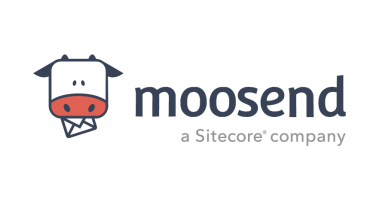
“When you work in this model, there are no middlemen and you have direct contact with the consumers. You have the right insights.”
So says Annica Rantala, CEO of Stronger, a Swedish online clothing brand. She is explaining the business model that recently prompted Danish private equity house Polaris to take a 51% stake in her firm, valuing it at SEK1bn (£85m) in the process.
“We’re creating and curating this brand and this business, together with our customers, with help from data. That secures a long lifetime for the brand,” Rantala adds.
The obvious benefit of the D2C channel is that it gives businesses key information about shoppers’ buying habits that they wouldn’t have when selling through a third-party retailer. Grasping the potential of this model, some big multinationals have been on something of a D2C acquisition spree this year. Unilever bought US food supplement brand Onnit, for instance, while Nestle’s purchase of British recipe-kit company SimplyCook marked its fourth D2C investment.
Venture capitalist David Pakman led funding rounds for Dollar Shave Club before its 2016 sale to Unilever for $1bn (£710m), one of the earliest and largest D2C deals in the packaged-goods sector. He says that the big players are going from having “absolutely no infrastructure to sell directly to consumers” to learning from their acquisitions how to communicate directly with customers, often via social media.
Pakman, a partner at Venrock Associates, says that one of the main reasons why Dollar Shave Club was so attractive to his firm – and, subsequently, Unilever – was the nature of the brand’s arrangement with its razor supplier.
“In this case, the big difference was that there are only five razor manufacturers in the world. Dollar Shave Club had an exclusive deal with one of these. Even if you were Amazon, you wouldn’t be able to enter this space,” he explains.
The D2C data play
Aside from the chance to gather valuable data on customers, could the basic fear of missing out be a factor when large companies acquire D2C brands? Not so, according to Andreia Vaz, Nestlé Portugal’s head of consumer market insight, strategy and innovation.
“I wouldn’t say that’s a reason. Everything in business is about time to market. Sometimes it’s quicker to invest in existing businesses and add value to their breakthrough ideas, rather than creating things from scratch,” she says, adding that Nestlé Portugal is “always active” in considering any potential M&A target.
“Having partners that can be an extension of our business is key. We seek partners with which we can co-create,” Vaz says. Nestlé assesses a company’s unique proposition and considers how hard or easy it would be to start a similar business.”
Real innovation usually comes from the outside
Acquiring D2C brands has also helped Nestlé to learn new working methods. “A lot of great start-ups have created businesses based on different premises from those of the traditional industry. Bringing in this new mindset adds value to the operation,” she says.
But the acquisitive approach isn’t for every big player, of course. Doing D2C in-house makes more sense for Reckitt, for example. The owner of brands such as Durex and Cillit Bang has seen a 21% increase in its ecommerce sales in the UK over the past year. While he acknowledges that looking outside the business could be an option, Reckitt’s UK ecommerce director, Tom Price, believes that his firm is already well capable of reacting to changes in the market and developing new projects itself.
“We can actually get from idea to creation within six months,” he says, pointing to the etail site that Reckitt created for dishwashing brand Finish at the end of 2020.
The data that’s gathered through the website helps to inform Reckitt’s consumer marketing campaigns for Finish, as well as those aimed at retailers.
“We can now understand what bundles work together and what don’t, what price points to hit and when people are doing most of their shopping. That’s all super rich data for us,” says Price, who adds that consumers tend to spend more when buying a bundle of products that are delivered direct.
Reaching consumers
Huib van Bockel, a former marketing executive at Red Bull and Unilever, started drinks business Tenzing Natural Energy in 2016, selling via retailers to start with. Since he started using the D2C channel about 18 months ago, Tenzing’s ecommerce sales have rocketed, and van Bockel has had to expand his team to help field the queries that come in directly from shoppers.
He believes that it’s “wise” of larger companies to buy up D2C brands, noting that “real innovation usually comes from the outside”. He does also detect a fear of missing out among some acquirers, which is driving their investments.
These larger players often have substantial deals in place with retailers such as Walmart or Tesco, so any decision to start selling a long-established brand directly to consumers might create conflicts with these powerful supermarket chains. Either starting their own D2C brand from scratch or acquiring one can help them to avoid such a clash, Pakman notes.
The risk of falling out with a retail giant has not been a concern for van Bockel, who believes that the two channels can be complementary rather than competitive. “Say you subscribe to Tenzing and have a couple of cans in your fridge. If you’re then out in a shop, you’re more likely to get one there as well,” he argues.
Now that many of the big players are getting their ecommerce affairs in order, their future D2C acquisitions may be more about the product than the channel, Pakman suggests.
“There was a time for Dollar Shave Club and others to exploit the weakness of the incumbents in using this new channel,” he says. “But, now that things have equalised a little, we’re really going back to being interested in the product, how differentiated it is and how under-served the market is.”

“When you work in this model, there are no middlemen and you have direct contact with the consumers. You have the right insights.”
So says Annica Rantala, CEO of Stronger, a Swedish online clothing brand. She is explaining the business model that recently prompted Danish private equity house Polaris to take a 51% stake in her firm, valuing it at SEK1bn (£85m) in the process.
“We’re creating and curating this brand and this business, together with our customers, with help from data. That secures a long lifetime for the brand,” Rantala adds.





